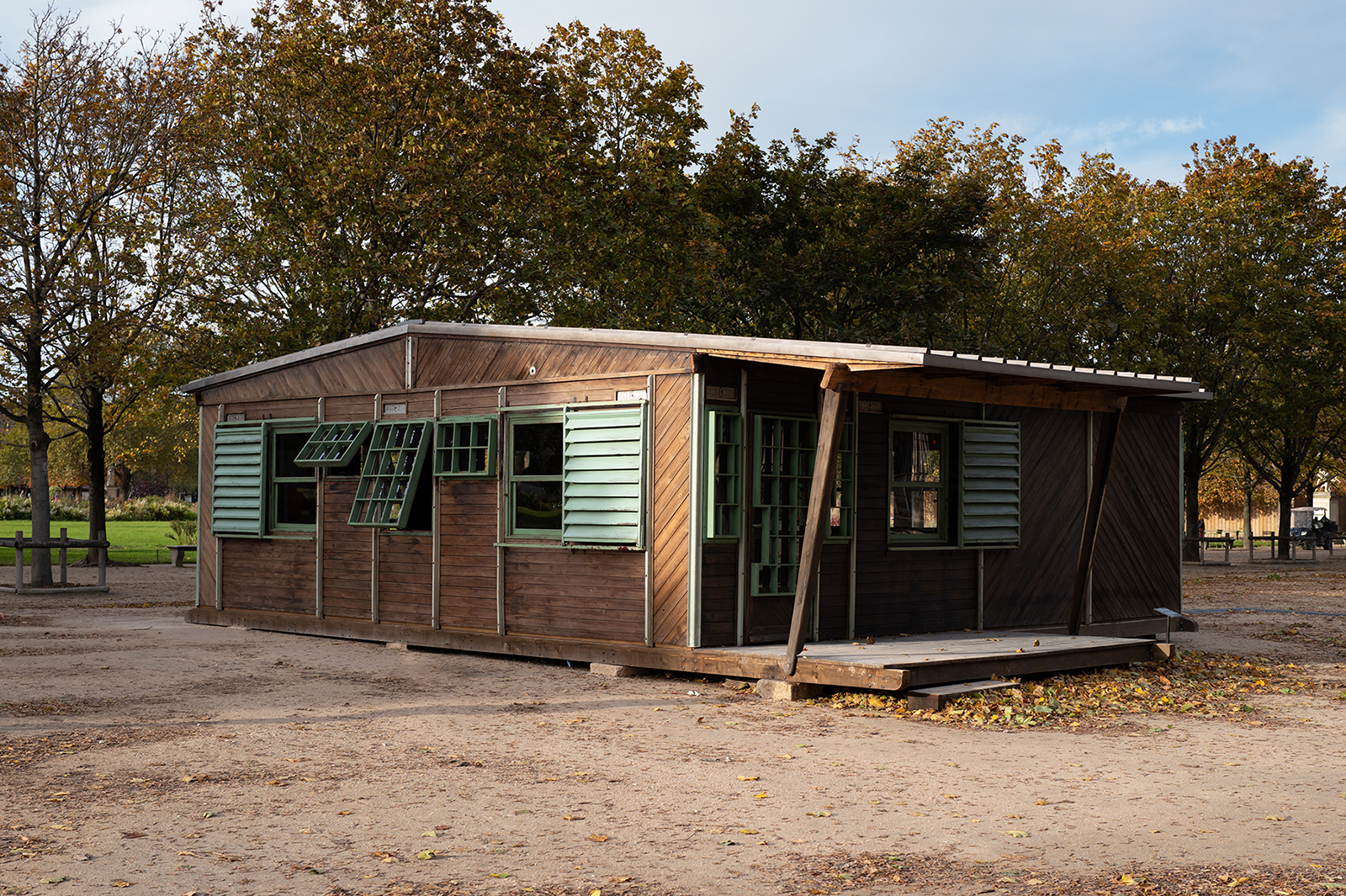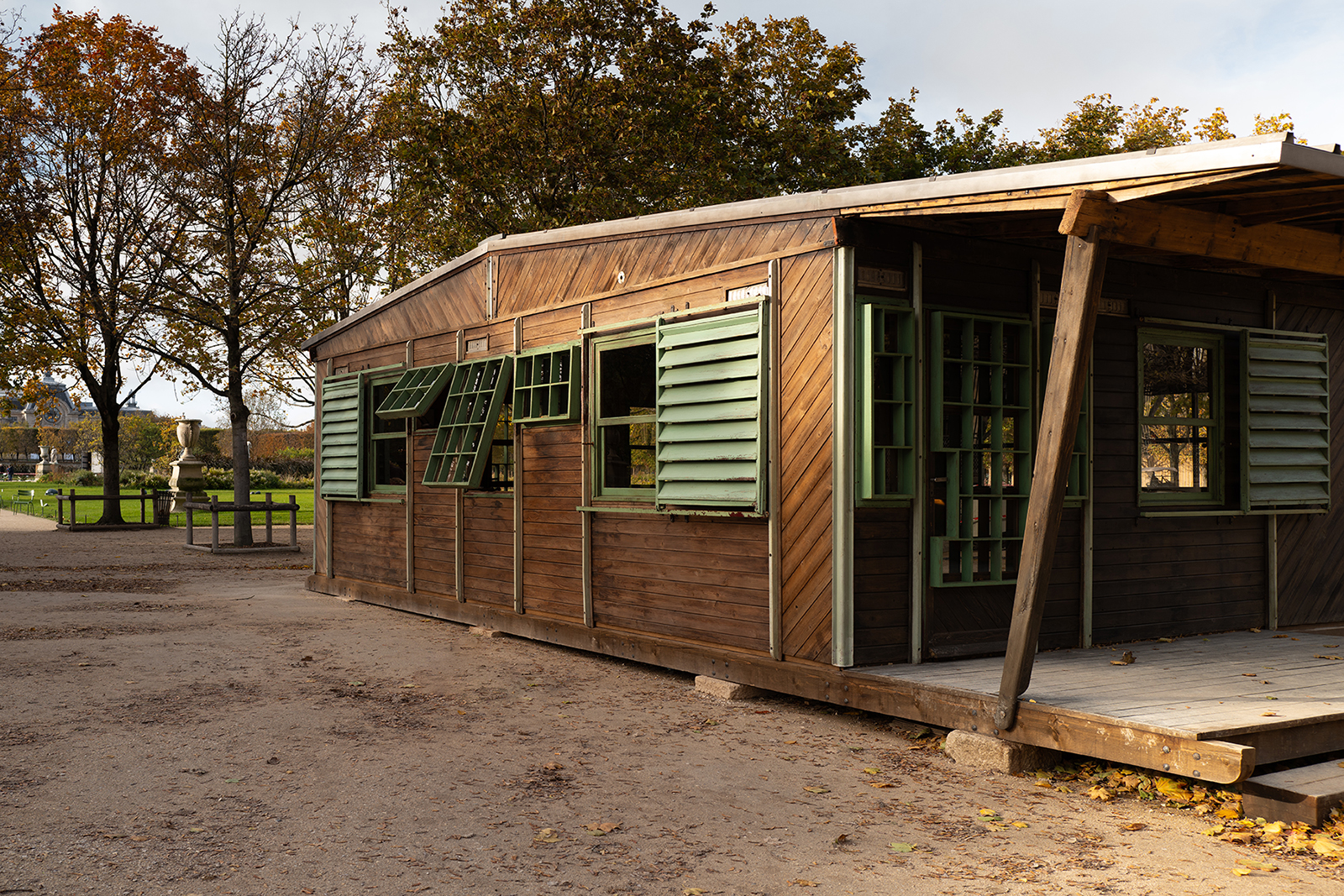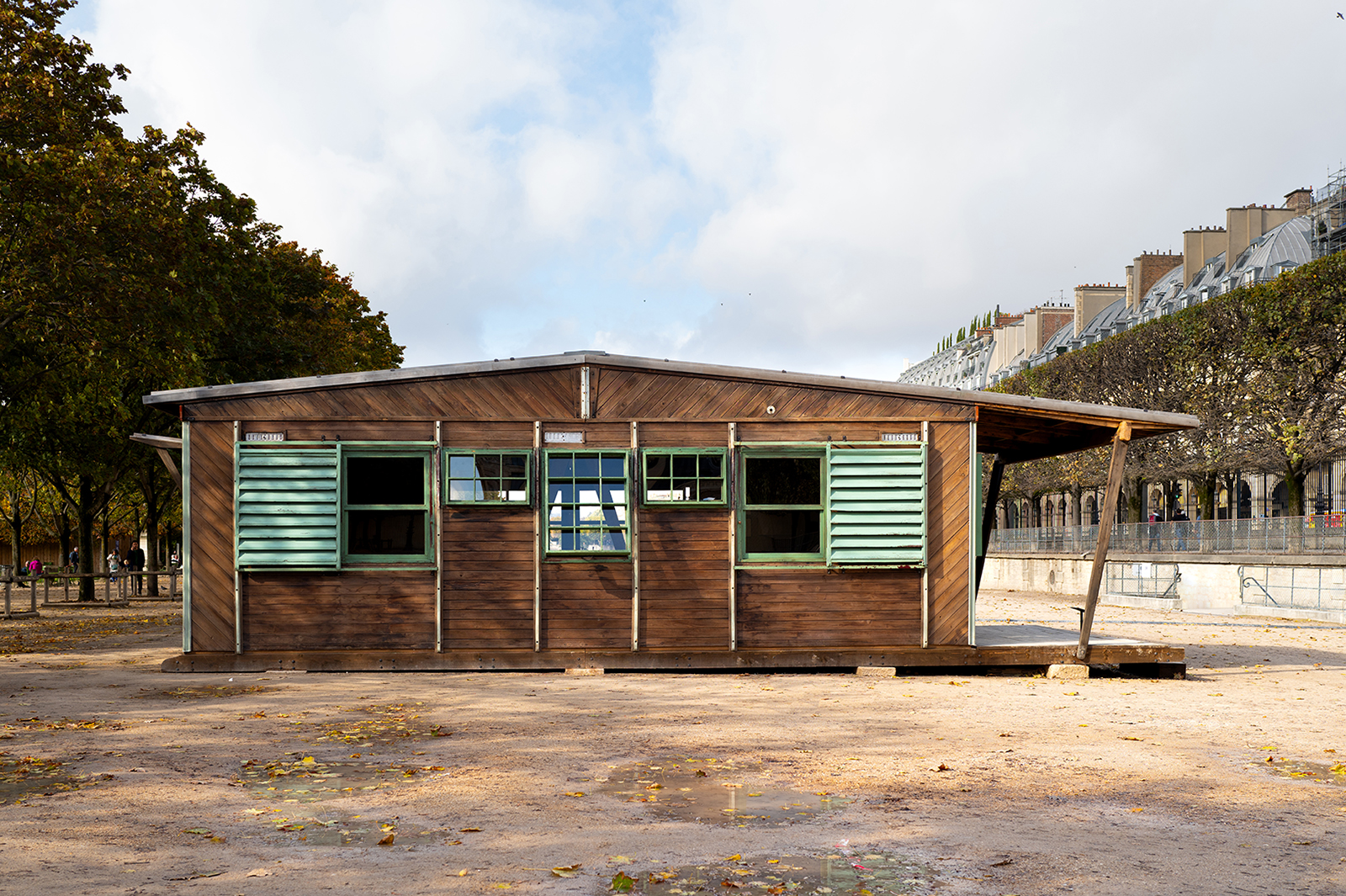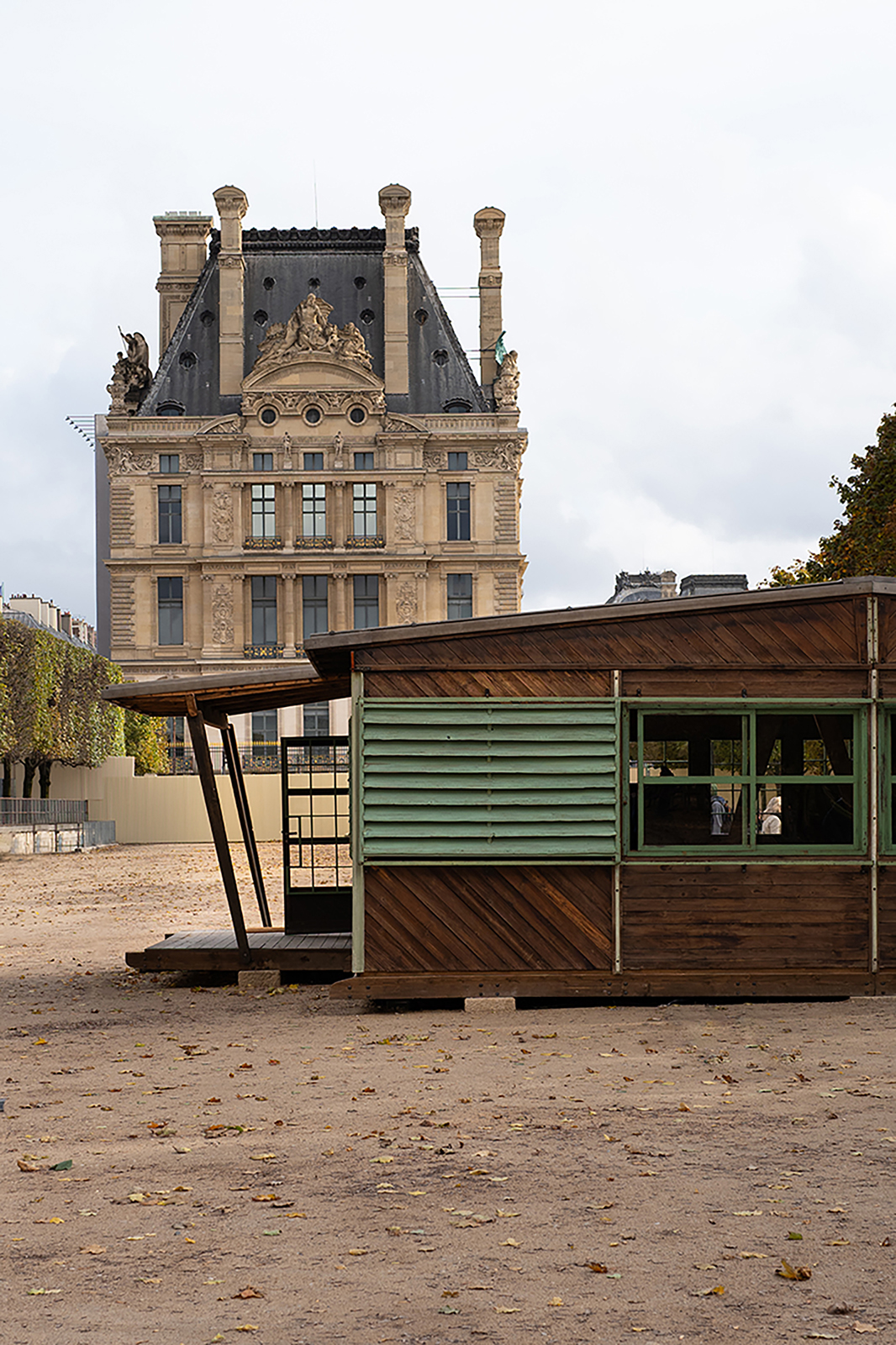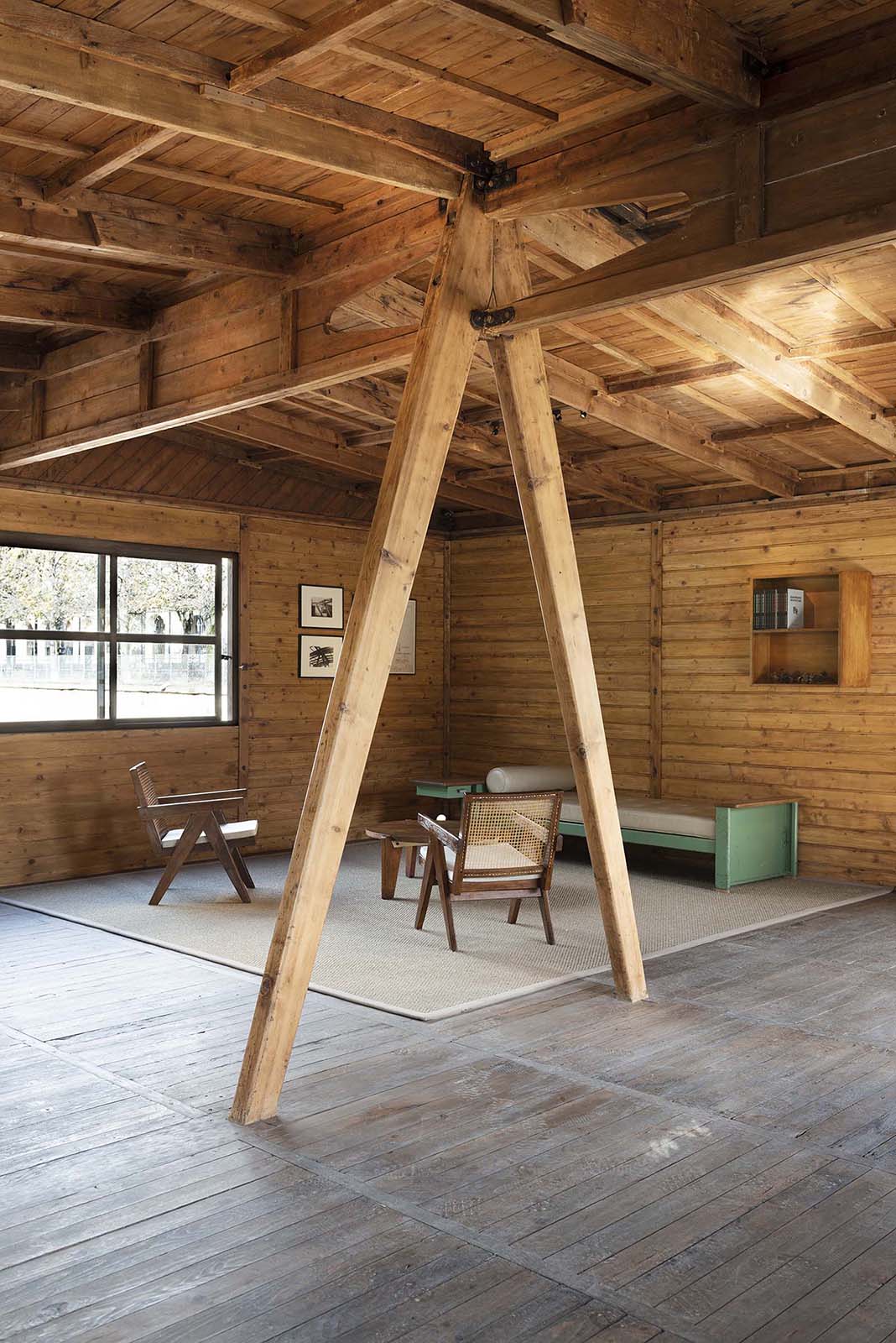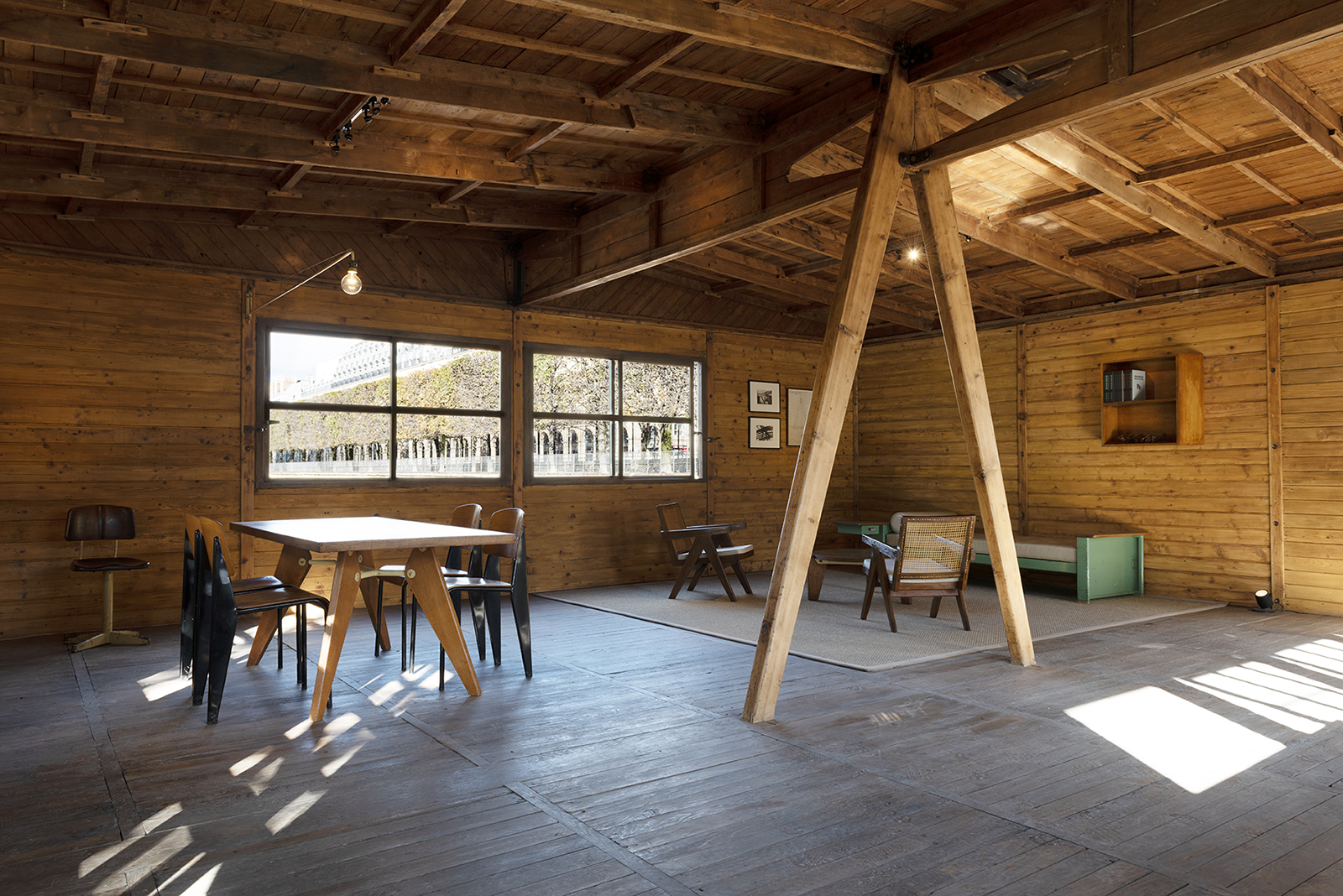JEAN PROUVÉ
F 8×8 BCC Demountable House, 1941 (with Pierre Jeanneret)Gard, France.
8,24 x 8,24 m27’3 x 27’3 ft
JEAN PROUVÉ and PIERRE JEANNERET’s F 8x8 BCC house fits in the series of projects initiated in 1938 and centered on the construction principle of using the axial portal frame, patented by Prouvé in 1939. The few examples of this small building, made of all wood, that were produced between 1941 and 1943 during extreme wartime conditions, emphasize the two men’s extraordinary ability to adapt to this situation.
They are also concrete evidence of the amicable collaboration that linked two inspired characters — architect and constructor — the former designing aesthetically pleasing technical objects and the latter revealing passion for construction and mechanics.
The use of the axial portal frame offered Pierre Jeanneret great freedom to organize the 68m² (731 sq ft) interior space that was intended for a family of five people.
Using a diverse range of propositions for small, economic homes that he had studied with Le Corbusier in the 1920s, Pierre Jeanneret designed a fluid, familial way of life around a fireplace generated by the visible central portal frame. Openwork sliding partitions divided up the interior, which was extended outdoors as a covered terrace.
For Pierre Jeanneret, as for Jean Prouvé, the obligation to adapt to extreme conditions was the opportunity to experiment with different resources and optimize the potential of a particular material, whatever material that may have been.
The aesthetically satisfying final product illustrates how the two creators responded perfectly to circumstances in their incessant quests for authenticity and modernity.
